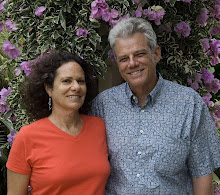Dear Divers,
We just returned from a great trip to Komodo. The park was fab as always. Damai (www.dive-damai.com) is a wonderful home base and their excellent service and numerous divemasters made this a special trip.
We began in Bima on the island of Sumbawa. Just outside the harbor, in the mouth of Bima Bay, we dived a couple of outstanding critter sites. The usual suspects, including bizarre scorpionfish, ghost pipefish, pygmy cuttlefish, a couple of mimic octopus, myriad nudis, and numerous fire urchins were seen and photographed. The fire urchins were enormous, about the size of a basketball cut in half. It seemed like each one was more beautiful than the next and almost everyone had some variety of commensal. Zebra crabs, almost big enough to eat, were the most prevalent and many of them were carrying eggs. Surprisingly quite a few urchins had squat lobsters, and Maurine found one with a crab we’ve never seen before. The Bima sites are excellent critter hunts.
Most of the divers with us on this trip, however, were new to the South Pacific and were expecting excellent viz and great reefs. At Sangean they saw the reefs they had anticipated. The next stop was Banta where we dived a couple of new (to us) sites on Banta’s west side. The most spectacular feature is a lovely, extensive hard coral garden with the most anthias we have ever encountered. Fish completely filled the water column. Additionally, we found a terminal phase “yellow” blue ribbon eel, and Ariel Cohn saw the trip’s first manta! On an outstanding night dive at “Small World” everyone saw their first stargazer.
The next day we finally made it to the park proper. We spent our first day in a bay (Batu Monco) on the NW corner of Komodo and everyone really enjoyed the clear water and easy drifts along the wall and bommie-covered slopes. The following morning we anchored off Gili Lawat Laut where, for the next two days, we dived some of the fishiest sites in Komodo, if not in all of Indonesia. “Crystal Bommie”, which we still call “Easy to Find Rock”, and “Castle Rock”, known to us old-timers as “Hard to Find Rock” were phenomenal. Huge schools of fish and the giant trevallies feeding on them; quite a few sharks, mostly whitetips, cruised the bommie; and a two-meter-long grey reef shark with several blue runners in attendance passed by me a few times. Never close enough for a good photo, of course. The “Fish Bowl” was magical, as always. Zillions of fish and lovely glassfish-covered bommies are the features of this site, along with the mantas that are usually seen at the end of the dive (we did). A nice surprise was a male jawfish with its mouth full of eggs. By this time, Gladys Howard, owner of Pirates Point Resort on Little Cayman Island (www.piratespointresort.com) was duly impressed. Her only disappointment of the entire trip was not getting to dive with her “son”, the late Larry Smith.
Since the SE trades were still blowing to beat the band, we spent the rest of our time in the park diving the better sites in the north like the two “Tatawas”, Batu Bolong, and Pantai Mera (Pink Beach). On the next to last day, however, we got a radio call from Mark Heighs, the cruise director and co-owner of Seven Seas (www.thesevenseas.net). Mark was in South Komodo. He said the winds had calmed and the mantas were abundant, so we sailed down there for our last full diving day. The mantas were indeed there, and on the second dive of the morning a cold (69 degree), clear (100 foot+) current bathed the cleaning station. The resulting photos are the best we’ve ever taken of mantas in the park. It was a wonderful way to end the diving portion of our trip.
The next day we went to Loh Buaya on Rinca Island for a walk to see Komodo dragons. We saw over a dozen dragons, including recently nested females guarding the next generation. All of our guests greatly enjoyed the walk, and it was an excellent way to end the cruise.
As I mentioned earlier, and in our last blog, our next stop is Cendrawasih Bay. We will be surveying Cendrawasih so that it can be included in the next edition of our Raja Ampat guidebook. This book will be expanded to include two destinations in addition to Raja. I imagine the new title will be something like Diving Indonesia’s Birds Head Seascape. We hope to see nesting Leatherback turtles, WWII wrecks, pristine reefs, and oh yes; the resident population of whale sharks. Yes, you are reading “resident”; this population of whale sharks, the world’s largest fish, appears to be permanently located in southern Cendrawasih Bay. Read about the initial results of this survey in our next blog (late September) and a full report in the new book, which should be published in the fall of 2011.
Until September,
Burt and Maurine
